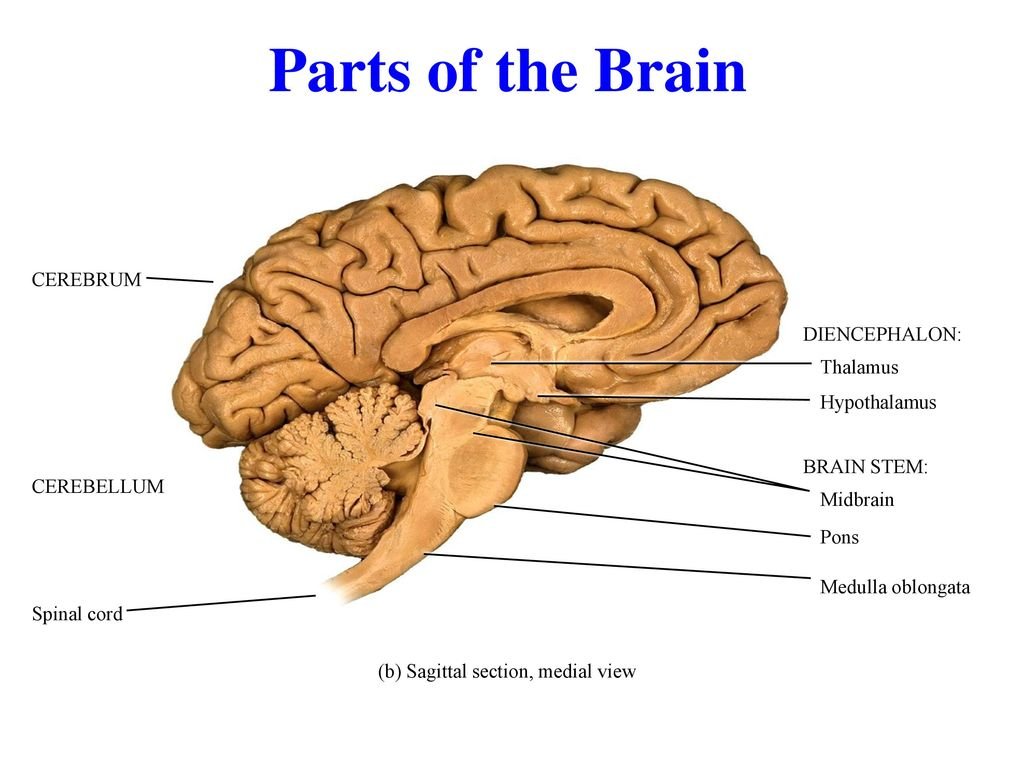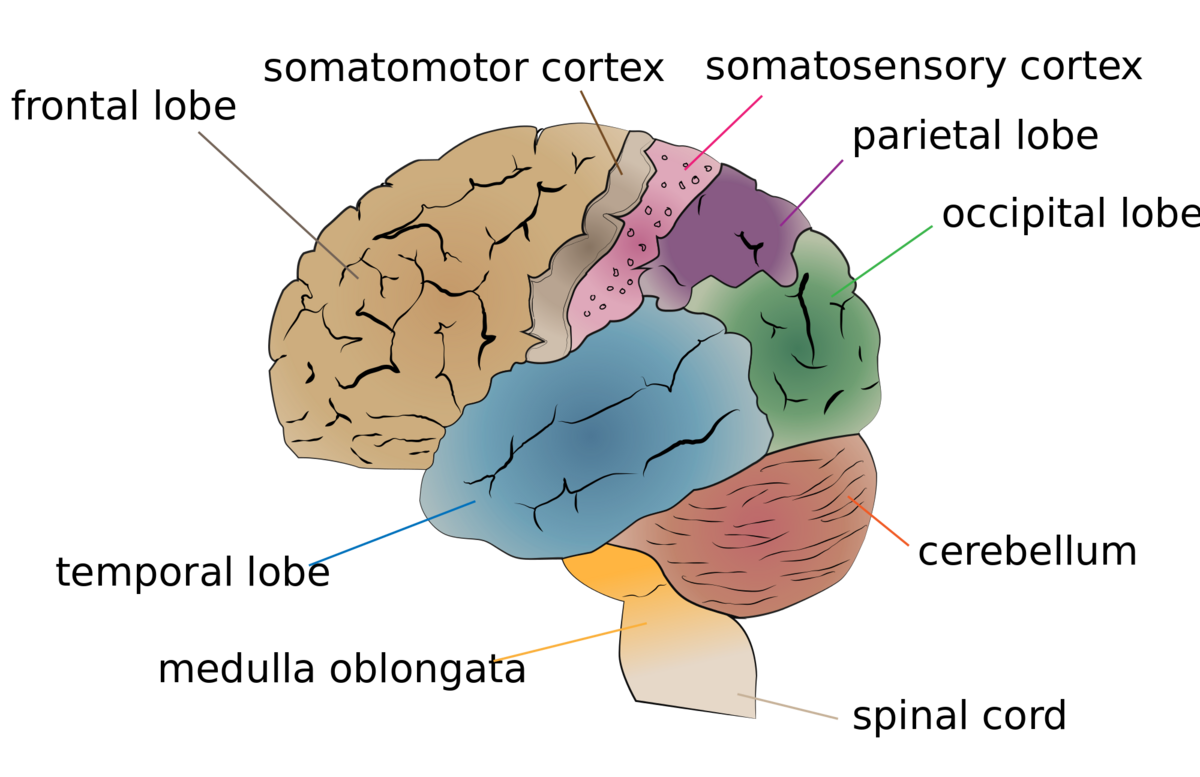Concept about Brain-The course is designed for the basic understanding of anatomical structures and physiological functions of human body, musculoskeletal system, digestive system, respiratory system; cardiovascular system; urinary system, endocrine system, reproductive system, nervous system, hematologic system, sensory organs, integumentary system, and immune system.The aim of the course is to acquire knowledge and skills regarding anatomy and physiology.

Concept about Brain
The brain is one of the largest organs of the body, consisting of about 100 billion neurons and 10-50 trillion neuroglia with a mass of about 1300 g (almost 3 lb) The brain is composed of an enormous number of associationneurons and accompanying neurogha, arrangedın regions and subdivisions These neurons receive sensoryinformation, direct the activity of motor neurons and perform such higher brain functions as learningand memory
Parts:-
There are four major parts of brain are:-
1. The brain stem.
2. Diencephalon.
3. Cerebrum, and
4. Cerebellum
1. The brain stem: is continuous with the spinal cord and consists of
- The medulla oblongata .
- Pons, and
- Midbrain
2. Diencephalon: Above the brain stem is the diencephalon consisting mostly a
- The thalamus
- Hypothalamus, and
- Pineal gland
3. Cerebrum: Supported on the diencephalon and brain stem and forming the bulk of the brain is the cerebrum. This is the largest part of the brain and it occupies the anterior and middle cranial fossae.
4. Cerebellum: The Cerebellum is situated behind the pons and immediately below the posterior portion of the cerebrum occupying the posterior cranial fossae.
(Ref J. TORTORA 8 edition. P-261-263 Ross & Wilson 9 ed. P-149 151)
Cerebrum & cerebellum

The cerebrum
The cerebrum a the largest pan of the brain. It consats of the cerebral cortex (an outer rim of gray matter) an internal region of cerebral white matter, and gray matter nucles deep within the white matter. The cerebrum provides us with the ability to read, write and speak, to make calculations and compose music, to remember the past and plan for the future, and to create.
The cerebral cortex rolls and folds upon itself so that it can fit into the cranial cavity
- The folds are called gyri (singular is gyrus)
- The deep groovesbetween folds are fissures.
- The shallow grooves are sulci (singular is sulcus).
Longitudinal fissure separates the cerebrum into right and lefthalves called cerebral hemispheres. The hemispheres are connected internally by the corpus callosum (corpus body; callosum hard), a broad band of white mattercontaining axons that extend between the hemispheres.
Each cerebral hemisphere has four lobes that are namedafter the bones that cover them
- Frontal lobe,
- Parietal lobe,
- Temporal lobe, and
- Occipital lobe
Cerebellum
The cerebellum consists of two cerebellar hemispheres, which are located posterior to the medulla and pons and immediately below the posterior portion of the cerebrum. The surface of the cerebellum called the cerebellar cortex, consists of gray matter.
Beneath the cortex is white matter that resembles thebranches of a tree. Deep within the whitematter are masses of gray matter, the cerebellar nuclei Thecerebellum attaches to the brain stem by bundles of axonscalled cerebellar peduncles.

Functions:-
- The cerebellum compares intended movements programmedby the cerebral cortex with what is actually happening
- li constantly receives sensory impulses from muscles, tendons, joints, equilibrium receptors, and visual receptors
- The cerebellum helps to smooth and coordinate complex sequencesof skeletal muscle contractions
- It regulates postureand balance and is essential for all skilled motor activities from catching a baseball to dancing
(Ref– Ross & Wilson 9th ed. P-150-155+ J. Tortora, 8h edition, P-268,269)
Read more:
